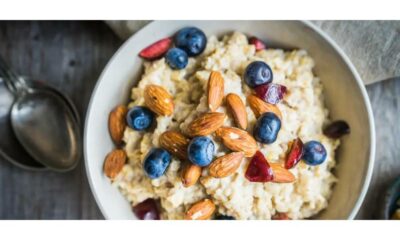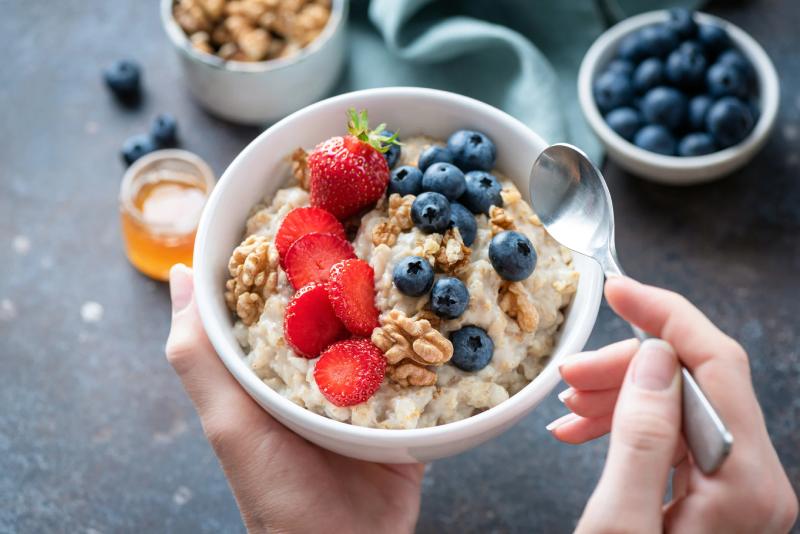Fiber is an essential component of a healthy diet, renowned for its numerous health benefits, including aiding digestion, promoting satiety, and preventing certain diseases. One of the most significant benefits of fiber is its ability to regulate blood sugar levels. This comprehensive guide explores how fiber contributes to blood sugar control, the different types of fiber, the best sources of dietary fiber, and practical tips for incorporating more fiber into your diet.
Understanding Blood Sugar and Its Regulation
What is Blood Sugar?
Blood sugar, or blood glucose, is the primary source of energy for the body’s cells. It comes from the foods we eat, particularly carbohydrates, and is transported to the cells via the bloodstream. Insulin, a hormone produced by the pancreas, plays a crucial role in regulating blood sugar levels by facilitating the uptake of glucose into the cells.
Importance of Blood Sugar Regulation
Maintaining stable blood sugar levels is vital for overall health. Chronic high blood sugar levels, a condition known as hyperglycemia, can lead to various health complications, including diabetes, cardiovascular diseases, and nerve damage. Conversely, low blood sugar levels, or hypoglycemia, can cause dizziness, confusion, and in severe cases, loss of consciousness. Therefore, effective blood sugar regulation is crucial for preventing these health issues.
The Role of Fiber in Blood Sugar Regulation
Types of Fiber: Soluble and Insoluble
There are two main types of dietary fiber: soluble and insoluble, each with distinct properties and health benefits.
- Soluble Fiber: Dissolves in water to form a gel-like substance. It slows down digestion and the absorption of nutrients, including glucose, which helps maintain steady blood sugar levels. Common sources include oats, beans, apples, and citrus fruits.
- Insoluble Fiber: Does not dissolve in water and adds bulk to the stool, promoting regular bowel movements. While its primary role is to prevent constipation, it also aids in maintaining overall digestive health. Common sources include whole grains, nuts, vegetables, and wheat bran.
How Fiber Regulates Blood Sugar
Fiber’s impact on blood sugar regulation is primarily attributed to its ability to slow the absorption of sugar into the bloodstream. Here are several mechanisms through which fiber achieves this:
- Slows Digestion: Soluble fiber forms a gel-like substance in the gut, which slows the digestion and absorption of carbohydrates. This results in a gradual release of glucose into the bloodstream, preventing sharp spikes in blood sugar levels.
- Improves Insulin Sensitivity: Some studies suggest that a high-fiber diet can improve insulin sensitivity, making it easier for the body’s cells to use glucose efficiently. This is particularly beneficial for individuals with insulin resistance or type 2 diabetes.
- Enhances Satiety: Fiber promotes a feeling of fullness, which can help control appetite and reduce overall food intake. This can lead to better weight management, a crucial factor in maintaining stable blood sugar levels.
- Reduces Glycemic Index: Foods high in fiber typically have a lower glycemic index (GI), meaning they cause a slower and lower rise in blood sugar levels compared to low-fiber foods.
Health Benefits of Fiber for Blood Sugar Regulation
Preventing Type 2 Diabetes
- Reduced Risk: Numerous studies have shown that a high intake of dietary fiber is associated with a lower risk of developing type 2 diabetes. The American Diabetes Association recommends a daily fiber intake of 25-30 grams from food, not supplements, to reduce the risk of diabetes.
- Improved Glycemic Control: For individuals with diabetes, high-fiber diets have been shown to improve glycemic control by reducing fasting blood sugar levels and improving overall blood sugar stability.
Managing Existing Diabetes
- Blood Sugar Control: Fiber, particularly soluble fiber, can help manage blood sugar levels in individuals with diabetes. It slows the absorption of glucose, reducing post-meal blood sugar spikes.
- Cholesterol Reduction: Many people with diabetes also have high cholesterol. Soluble fiber helps reduce LDL (bad) cholesterol levels, which is beneficial for heart health.
- Weight Management: Fiber aids in weight management by promoting satiety and reducing overall calorie intake. Maintaining a healthy weight is crucial for managing diabetes effectively.
Supporting Cardiovascular Health
- Lowering Blood Pressure: High-fiber diets have been associated with lower blood pressure levels, which is beneficial for heart health and blood sugar regulation.
- Reducing Inflammation: Fiber-rich diets help reduce inflammation, a common issue in individuals with diabetes and metabolic syndrome.
- Improving Lipid Profiles: Soluble fiber helps improve lipid profiles by lowering LDL cholesterol and triglycerides while increasing HDL (good) cholesterol.
Sources of Dietary Fiber
High-Fiber Foods
- Fruits: Apples, oranges, berries, pears, and bananas are excellent sources of fiber. They provide a mix of both soluble and insoluble fiber.
- Vegetables: Broccoli, carrots, Brussels sprouts, and leafy greens are rich in fiber. Including a variety of vegetables in your diet ensures you get a balance of fiber types.
- Whole Grains: Oats, barley, quinoa, brown rice, and whole wheat products are high in fiber. Opt for whole grains over refined grains to maximize fiber intake.
- Legumes: Beans, lentils, chickpeas, and peas are among the best sources of fiber. They are also rich in protein, making them a great addition to a balanced diet.
- Nuts and Seeds: Almonds, chia seeds, flaxseeds, and walnuts provide a good amount of fiber along with healthy fats.
- Fiber Supplements: While it’s best to get fiber from whole foods, supplements like psyllium husk can be used to increase fiber intake if needed.
Practical Tips for Increasing Fiber Intake
- Gradual Increase: Increase fiber intake gradually to avoid digestive discomfort. Start by adding one high-fiber food to your diet each day.
- Hydration: Drink plenty of water as you increase your fiber intake. Fiber works best when it absorbs water, helping to keep your digestive system moving smoothly.
- Meal Planning: Plan meals around fiber-rich foods. Incorporate fruits, vegetables, whole grains, and legumes into every meal.
- Snacking Smart: Choose high-fiber snacks like fresh fruit, raw vegetables with hummus, or a handful of nuts.
- Reading Labels: Check food labels for fiber content. Look for products with at least 3 grams of fiber per serving.
- Cooking Techniques: Add fiber-rich ingredients to your favorite recipes. For example, add beans to soups and stews, or sprinkle chia seeds on yogurt and salads.
Potential Challenges and Solutions
Digestive Issues
- Bloating and Gas: Some people may experience bloating and gas when increasing fiber intake. To minimize these issues, increase fiber slowly and ensure adequate water intake.
- Fiber Supplements: If whole foods are not providing enough fiber, consider supplements. However, it’s important to choose supplements wisely and use them as an adjunct to, not a replacement for, dietary fiber.
Balancing Fiber with Other Nutrients
- Nutrient Absorption: High-fiber diets can sometimes interfere with the absorption of minerals like iron, zinc, and calcium. To mitigate this, consume a balanced diet with a variety of nutrient-rich foods.
- Individual Needs: Different people have different fiber needs. It’s important to listen to your body and adjust fiber intake according to how you feel and any specific health conditions you may have.
Conclusion
Fiber plays a crucial role in regulating blood sugar levels and offers numerous health benefits. By slowing digestion, improving insulin sensitivity, and enhancing satiety, fiber helps maintain stable blood sugar levels, reducing the risk of diabetes and aiding in the management of existing diabetes. Incorporating a variety of fiber-rich foods into your diet is a practical and effective strategy for improving overall health and well-being. As you increase your fiber intake, do so gradually and stay hydrated to maximize the benefits and minimize any potential digestive discomfort. With thoughtful planning and a balanced approach, you can harness the power of fiber to support optimal blood sugar regulation and long-term health.

 Diabetology2 weeks ago
Diabetology2 weeks ago
 Diabetology7 days ago
Diabetology7 days ago
 Diabetology5 days ago
Diabetology5 days ago
 Diabetology6 days ago
Diabetology6 days ago
 Diabetology6 days ago
Diabetology6 days ago
 Diabetology3 days ago
Diabetology3 days ago
 Diabetology3 days ago
Diabetology3 days ago
 Diabetology14 hours ago
Diabetology14 hours ago







